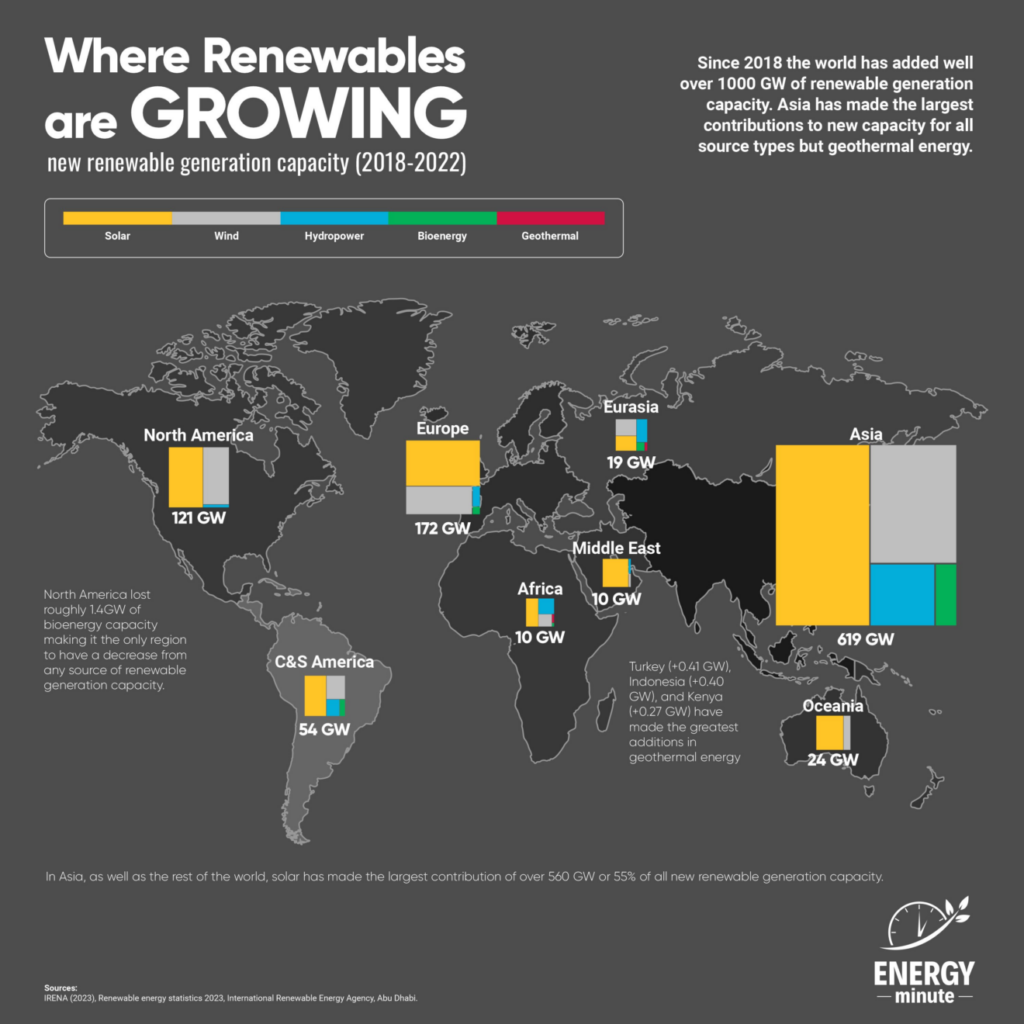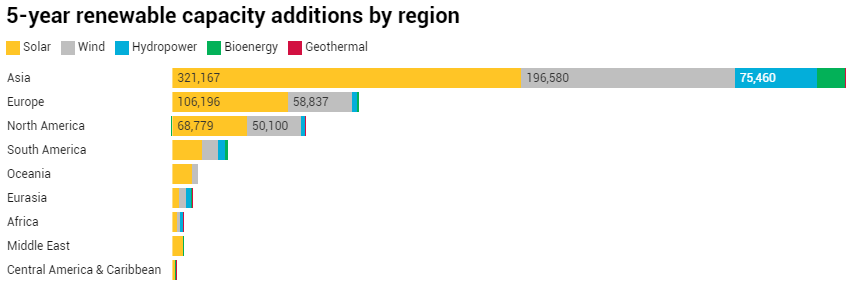By Cody Good

Courtesy of ENERGYminute
See more articles and infographics from ENERGYminute HERE
Over the past five years, global renewable energy growth has been accelerated by significant technological advancements and declining costs, especially in solar and wind energy sectors. Policy specifically has played a key role, with governments implementing policies and incentives to foster this growth.
International cooperation, like the signing of the Paris Agreement, paired with a growing consumer demand for green energy have further helped the expansion of renewable energy sources globally.

Source: IRENA | Created with Datawrapper
Drivers of growth
The growth of renewable energy globally over the past five years has been remarkable, driven by several key factors:
- Solar: Energy from solar power has seen the largest growth, with costs falling dramatically. This is partly due to technological advancements and increased manufacturing scale. Many countries have significantly increased their solar energy capacity.
- Wind: Both onshore and offshore, has also experienced substantial growth. Offshore wind farms in particular have gained traction due to their larger capacity and consistent wind speeds.
- Policies and incentives: Various governments around the world have introduced policies and incentives to promote renewable energy. These include subsidies, tax incentives, and renewable energy targets.
- Increasing investment: There has been a surge in investment in renewable energy from both public and private sectors. This is a result of growing awareness of climate change on top of energy sources that are more economic.
- Technological innovation: Advances in technology have made renewable energy sources more efficient and cheaper. Battery storage technology has also improved, allowing for better storage of renewable energy.
- Global agreements and commitments: International agreements like the Paris Agreement have prompted countries to increase their renewable energy usage to meet emission reduction targets.
- Decentralization and community projects: There’s been a rise in decentralized energy systems and community-led renewable energy projects, especially in remote or rural areas.
- Energy security: Some countries have looked to renewables to reduce dependence on foreign supplies of fossil fuels to improve energy security.
Sources
IRENA (2023), Renewable energy statistics 2023, International Renewable Energy Agency, Abu Dhabi
Share This:
Next Article




